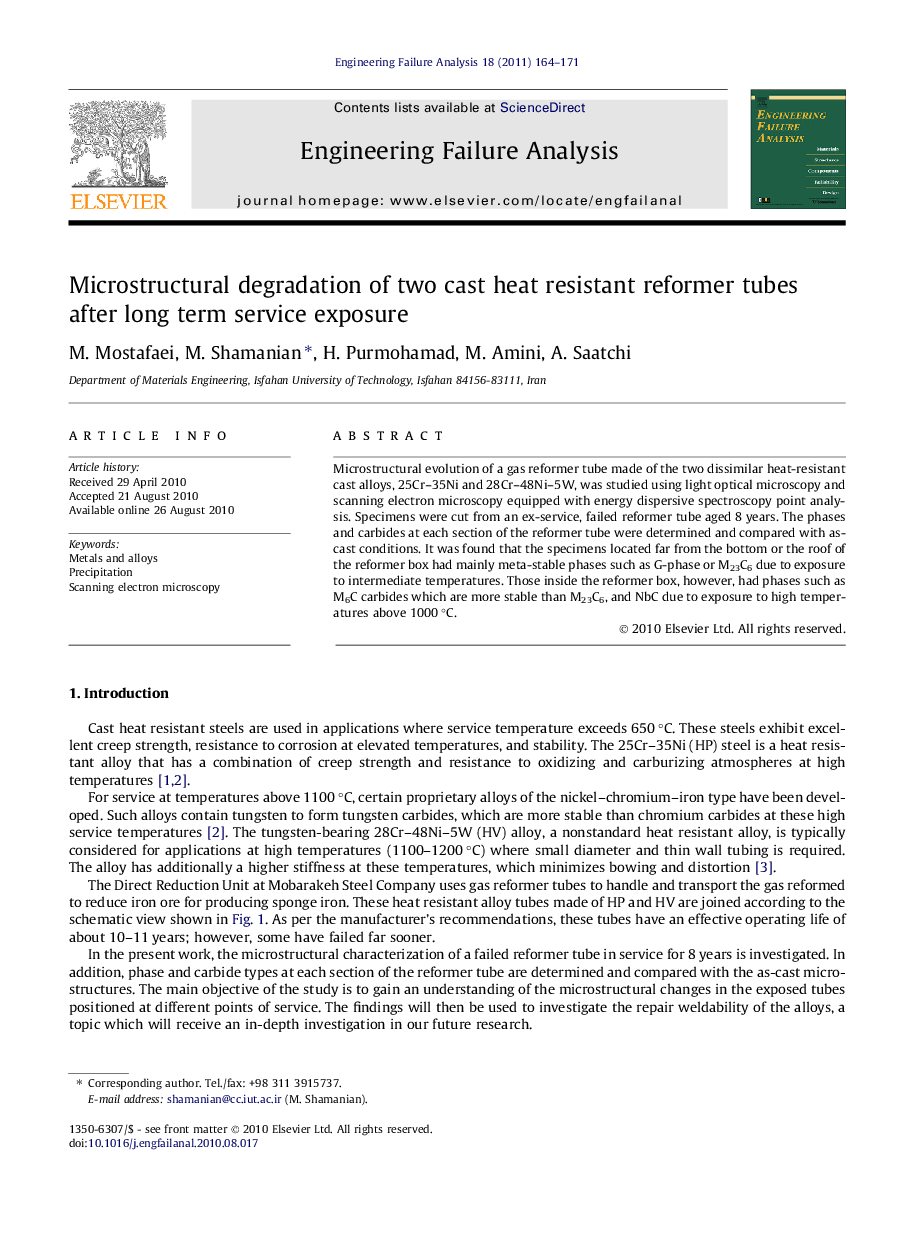| Article ID | Journal | Published Year | Pages | File Type |
|---|---|---|---|---|
| 769172 | Engineering Failure Analysis | 2011 | 8 Pages |
Microstructural evolution of a gas reformer tube made of the two dissimilar heat-resistant cast alloys, 25Cr–35Ni and 28Cr–48Ni–5W, was studied using light optical microscopy and scanning electron microscopy equipped with energy dispersive spectroscopy point analysis. Specimens were cut from an ex-service, failed reformer tube aged 8 years. The phases and carbides at each section of the reformer tube were determined and compared with as-cast conditions. It was found that the specimens located far from the bottom or the roof of the reformer box had mainly meta-stable phases such as G-phase or M23C6 due to exposure to intermediate temperatures. Those inside the reformer box, however, had phases such as M6C carbides which are more stable than M23C6, and NbC due to exposure to high temperatures above 1000 °C.
